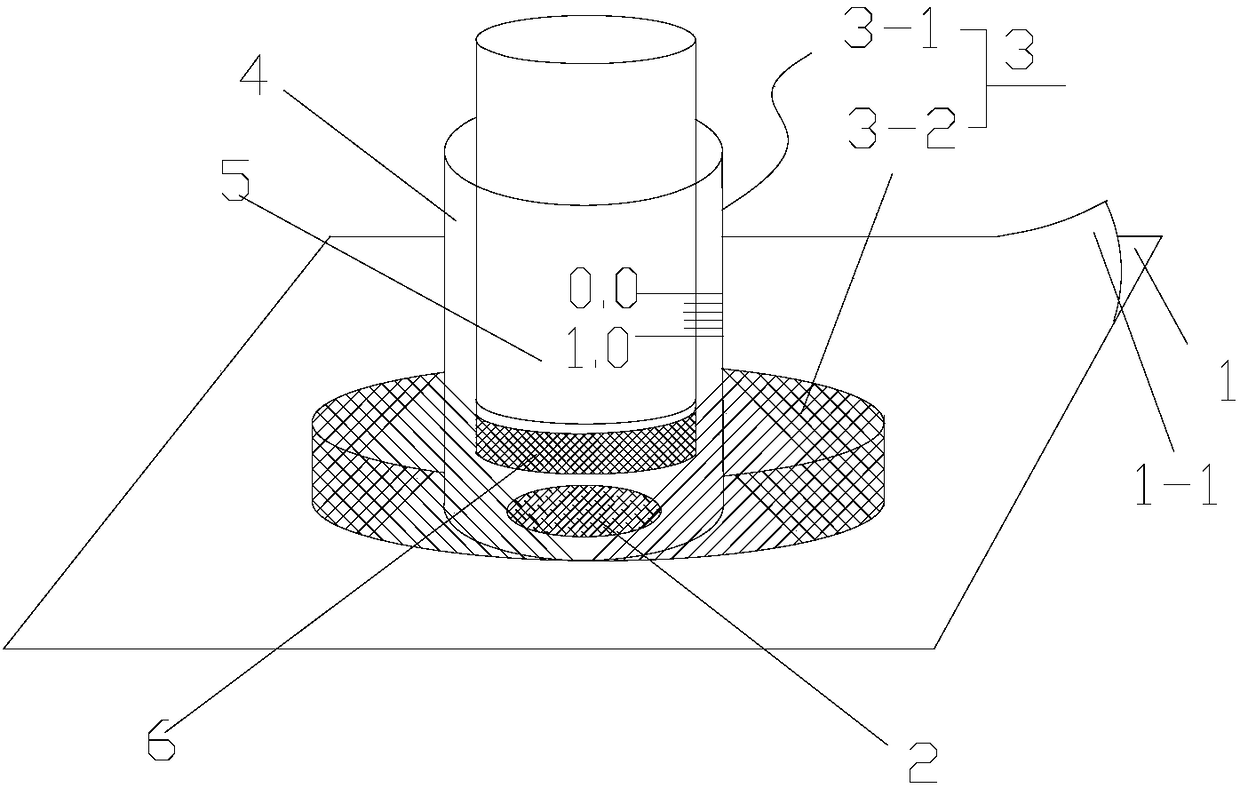Hemostatic device for subcutaneous injection site
A subcutaneous injection and site-based technology, applied in the field of medical devices, can solve the problems of high incidence of adverse reactions, low medication compliance, and reduced patient medication compliance
- Summary
- Abstract
- Description
- Claims
- Application Information
AI Technical Summary
Problems solved by technology
Method used
Image
Examples
Embodiment Construction
[0013] Below in conjunction with preferred embodiment, the specific implementation mode provided according to the present invention is described in detail as follows:
[0014] See the accompanying drawings for details. This embodiment provides a hemostatic device for subcutaneous injection sites, including a medical adhesive layer 1, a absorbent cotton layer 2, and a push self-locking mechanism 3. The push self-locking mechanism is placed in the central part of the medical adhesive layer. , the push self-locking mechanism includes a push self-locking cylinder 3-1 and a bottom surface support 3-2, the press self-locking cylinder is affixed to the center of the bottom surface support, and the end surface of the push self-locking cylinder contacting the patient's skin is affixed with a absorbent cotton layer . The self-locking distance of the self-locking cylinder moving vertically downward is 1 cm. The adhesive surface of the medical adhesive layer is provided with protective p...
PUM
 Login to View More
Login to View More Abstract
Description
Claims
Application Information
 Login to View More
Login to View More - R&D
- Intellectual Property
- Life Sciences
- Materials
- Tech Scout
- Unparalleled Data Quality
- Higher Quality Content
- 60% Fewer Hallucinations
Browse by: Latest US Patents, China's latest patents, Technical Efficacy Thesaurus, Application Domain, Technology Topic, Popular Technical Reports.
© 2025 PatSnap. All rights reserved.Legal|Privacy policy|Modern Slavery Act Transparency Statement|Sitemap|About US| Contact US: help@patsnap.com

